When it comes to fly fishing, size matters. Too heavy, and after a few hours, it will feel like you are wielding an iron rod; too light, and you won’t be able to reel in the big ones. Unlike freshwater fly fishing, the saltwater experience is a whole different ballgame. You’ll need equipment that can withstand salt water, starting with a high-performance rod that is versatile enough to reel in fish from rolling waves, boats, or quiet estuaries.
The size of the rod required for saltwater fishing should be target fish species specific. A 9-weight rod is a versatile size for saltwater fishing. Lighter rods of 6 or 7-weight work well for fish up to seven pounds. Saltwater fly-fishing rods range up to 16-weight for targeting tuna or big sharks.
If you are new to fly fishing in salt water, you may be shocked by the difference in equipment cost compared to freshwater gear. The outlay is well worth it, though, and choosing the best size rod right away can save you a ton of money down the line.
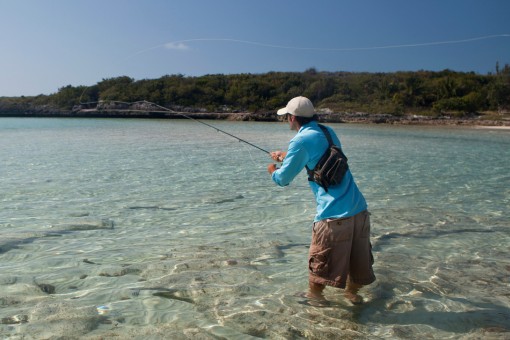
What Size Fly Rod Is Best For Salt Water?
While it may be tempting to use your tried-and-tested fly rod for saltwater fishing, and it may even perform decently, it is sure to get irreparably damaged. Once the saltwater gets into the metal parts, no amount of washing will be able to get it out.
The size of the saltwater fly-fishing rod you choose should depend on whether you are targeting specific fish species or just need one versatile rod for general saltwater fishing. An 8-weight rod is undeniably an excellent starting point for novice saltwater fly anglers, but it may be limiting as you progress onto more sizable fish species.
Successfully casting and landing fish while fly fishing is a careful balancing act. Rod, reel, line, and fly need to be matched and work together to create a tangle-free, fluid casting action that lands your lure where you intended.
At the coast, wind can also affect the line action, so choosing a rod that is one size up often makes sense to give you more control when conditions aren’t perfect. It’s no good to select a light rod if you are using a heavy fly, and combined with variable weather and water conditions, making the wrong decision may make your day trip memorable for all the wrong reasons.
A 9-weight fly rod is the most versatile choice that is perfect for fish species between 3-15 pounds. It provides a sensible mix of easy maneuverability and a wide range of target fish. If you need a rod with slightly more oomph, a 10-weight will see you landing catches up to 40 pounds.
Another consideration is whether you will be fishing mainly from the shore or off a boat. Generally, a longer rod is required to cast further from the waterline. While an 8-foot 9-weight rod is ideal for making short casts or fishing under bridges or areas with limited space, you may prefer a 9-foot, 9-weight if you are able to cast freely with big movements.
The deciding factors when it comes to rod length are how it feels to the individual angler and their skill level. Unless you are fishing for a specific species, saltwater fly anglers can’t go wrong with a solid middle-of-the-road option with weights from 8 to 10.
Should I Get An 8 or 9 Weight Rod For Saltwater?
Eight and nine-weight fly fishing rods for saltwater are two popular choices. If you don’t already have a dedicated all-purpose saltwater fly-fishing rod, this is where you should start, as these mid-weight rods offer plenty of versatility when targeting a range of average fish.
While it is generally agreed that an 8-weight rod provides a versatile saltwater fly fishing experience that is easy on the arm, it does have some limitations. Although it is viewed as a big standard rod size, some anglers find it limiting, especially when they want to experiment with heavier flies.
Like all saltwater fly-fishing rods, the best choice is the one that feels good and will handle your target fish. To get a better idea of the differences between these two popular rod weights, let’s look at some of the differences between them.
| Rod Size | 8-Weight Fly Rod | 9-Weight Fly Rod |
| Target Fish Size | 2-10 pounds | 3-15 pounds |
| Fish Type | Average-sized bonefish, snook, stripers, and redfish | Larger bonefish, small tarpon, snook, stripers, small permit |
| Advantages | Easier to cast | It may feel too heavy for some anglers |
| A great all-rounder rod | Works well in the wind | |
| Comfortable, versatile, popular-sized rod | Better for big baitfish flies and deep sinking lines | |
| Suitable for flies sized between #10 -#2 | It can be used to cast larger and heavier flies sized #6 – #1/0 |
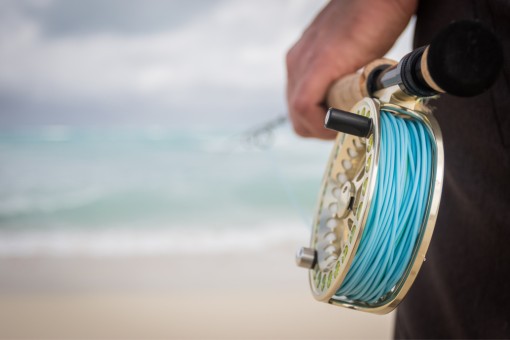
Can You Use Any Fly Rod In Salt Water?
Although saltwater fly-fishing rods work perfectly in fresh water, the reverse is not advisable. While the performance of a freshwater rod won’t let you down in the sea or estuary, you risk losing your favorite gear to corrosion at a rapid rate.
If you regularly fish in a combination of fresh and saltwater destinations, it is better to invest in saltwater equipment. The slightly higher price tag will ensure that your gear will withstand the corrosive properties of saltwater so that it will last longer.
In addition to damaging freshwater gear in salt water, there are several other differences between freshwater and saltwater rods:
- Saltwater rods are usually made thicker and heavier than freshwater rods to withstand harsher conditions.
- Saltwater rods are usually more robust and can cope with energetic fish that don’t give up easily.
- Because freshwater rods are often lighter, they tend to provide greater sensitivity for the angler.
If you do succumb to the temptation and use your freshwater rod in salt water, take special care to rinse and dry every section of the rod as soon as possible. While it may not save your rod long-term, soaking the components in a bath of hot, soapy water before rinsing thoroughly in clean water after each use may slow down the inevitable onset of corrosion.
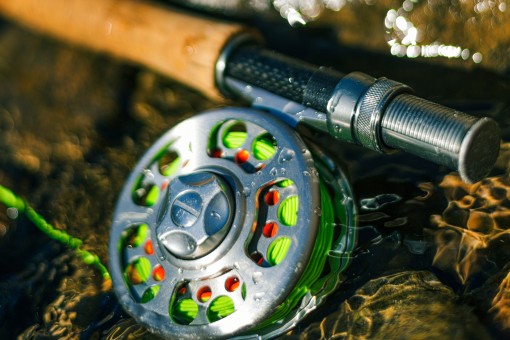
How Do I Choose A Saltwater Fly Rod?
If you are new to saltwater fly fishing without any particular target species in mind, it is advisable to choose a rod between an 8 and 10 weight that feels comfortable. Ensure that your rod and reel are well-matched and able to handle the type of flies you want to use.
In addition to only focusing on your rod’s weight, there are a few other things to keep in mind when selecting a fly rod for saltwater fishing:
- Does it have a warranty? If you can afford quality equipment, look out for rods with a lifetime guarantee.
- Choose a versatile rod suitable for where you will be fishing most of the time. Although mid-weight rods are the most popular if you are more interested in hooking sharks or tarpon, head straight for weights of 12 and above.
- Rod Material – Saltwater rods are mostly made from either graphite or fiberglass. Graphite provides more sensitivity, but for power and toughness, you can’t beat fiberglass. Anglers usually prefer one over the other, and the preference is purely personal.
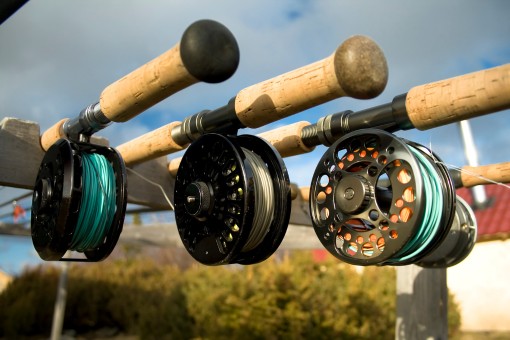
Conclusion
Choosing a rod for fishing in saltwater is like selecting any other type of fishing rod. The decision should be based on the species of fish being targeted. Versatile sizes range between 8 and 10 weight rods. Although freshwater fly-fishing equipment can be used in saltwater, it is never recommended as the metal components are not made to withstand the corrosive properties of saltwater.
- Do You Need An Indicator For Nymph Fishing? - November 16, 2023
- Fishing Safety Tips For Families - September 25, 2023
- What Is The Best Time To Night Fish At A Lake? - September 18, 2023




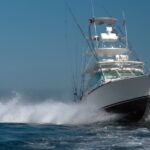
![Types of Fishing Rods [A Guide For Beginners] types of fishing rods](https://irvinelake.net/wp-content/uploads/2022/10/types-of-fishing-rods-1-150x150.png)


![Kayak Fishing for Beginners [10 Tips for a Successful Trip] fishing kayak moored on a beach](https://irvinelake.net/wp-content/uploads/2022/12/kayak-fishing-for-beginners-150x150.png)